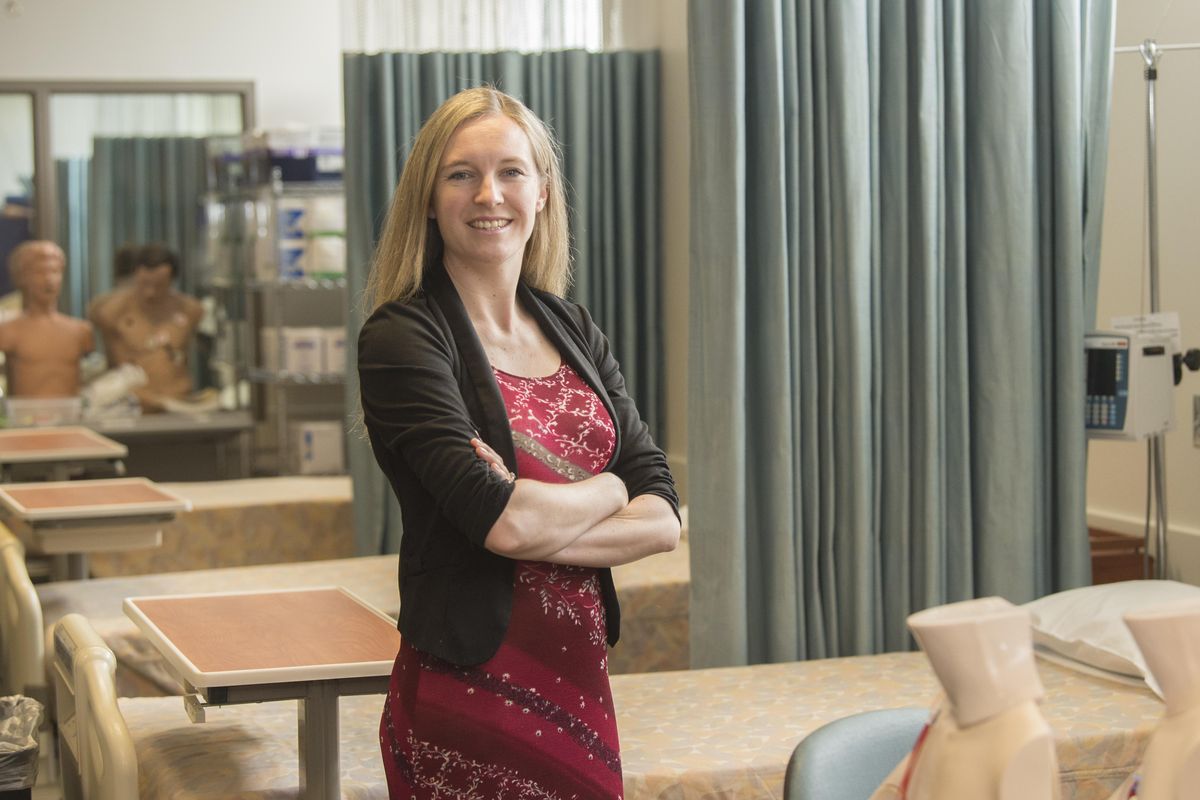WSU nabs $1 million grant to study work shifts of nurses

From truck drivers to police officers, a lot of research has shown working 12-hour overnight shifts can hurt job performance.
A research team at Washington State University is hoping to quantify those risks for nurses.
Led by Lois James, a researcher with the university’s sleep and performance lab, the $1 million, three-year grant will evaluate how well nurses can calculate medication dosages and perform other patient care tasks after three consecutive 12-hour shifts, and also evaluate their driving safety.
Why study something that seems like common sense?
James said the project will go beyond the well-known fact that 12-hour night shifts tend to cause fatigue. Nurses will be studied in WSU’s nursing simulation lab, where they’ll perform patient care tasks on hyper-realistic mannequins.
They’ll also be outfitted with goggles to track eye motion, which will help researchers understand the underlying causes of any errors they make.
“If a nurse doesn’t respond quickly to a change in vitals, is it just because they’re not seeing it?” James said.
Twelve-hour shifts are popular for many nurses, who like having four days off and being able to care for patients for a long period, and for hospitals, where they make scheduling easier.
“There’s not really enough evidence to say whether it’s a bad idea for nurses in terms of patient-care outcomes and their own safety,” James said.
Marian Wilson, a professor of nursing at WSU who worked in hospitals for decades, said existing work about the negative effects of 12-hour night shifts has yet to make an impact in hospitals.
“We have evidence from all kinds of other industries and professions that 12-hour shifts, particularly on night shift, can be detrimental to performance,” she said. “There’s a culture in nursing where I feel we expect nurses to be superhuman.”
Wilson is one of the researchers on the study and will be focused on interpreting clinical results from the simulation and working with the nursing community to publicize their findings.
Doctors are typically allowed, and sometimes encouraged, to nap during night shifts so they can remain alert on the job, she said. Nurses, who perform the majority of hands-on patient care, don’t get the same consideration.
“Nurses often forgo meals. Nurses certainly are not encouraged and can even be fired for sleeping,” she said.
James said doctors in the U.S. have had regulations about the number of consecutive hours they can work since 1987, but there are no similar guidelines for nurses.
Historically, that’s because they’ve been considered secondary to doctors, though nurses are often performing the hands-on tasks where errors can have a huge impact.
“Preventable medical errors are a huge cause of concern in the U.S.,” James said.
In particular, calculating medication dosages is vital to get right.
“It also has very deadly consequences if it’s wrong,” Wilson said.
The study will include 100 nurses from Providence Sacred Heart Medical Center, half working day shifts and half working night shifts.
James said one of her goals is to see whether a 12-hour night shift is worse for performance than a 12-hour day shift. She hopes the results might lead to hospitals developing safe work guidelines for nurses, and wants to work with health care providers to apply the results.
“The goal of research is to try and improve the conditions of whoever you’re researching,” she said.